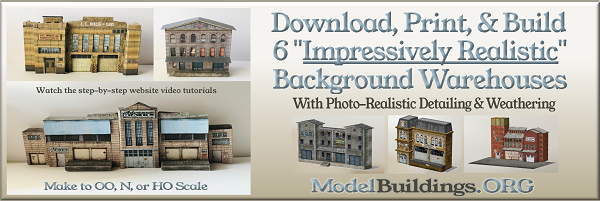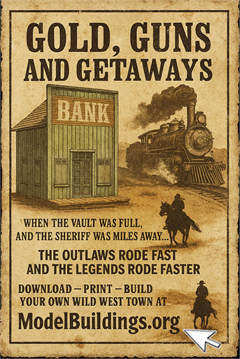Everything on model trains, model railroads, model railways, locomotives, model train layouts, scenery, wiring, DCC and more. Enjoy the world's best hobby... model railroading!
What’s Better Than Scenery Made With Paper and Plaster?
Ernie has a question for readers:
“I am getting ready to build scenery on my layout and thought of using wads of paper under the plaster cloth. However I’m not sure what to do now after reading somewhere that paper will suck in moister over time. Is this true? What could I use instead of paper?”
9 Responses to What’s Better Than Scenery Made With Paper and Plaster?
Leave a Reply















Hi Ernie,
I tried to use the same but i didn’t like it. On several spots the plaster droped through the holes between the paper balls and the whole structure was not very sturdy. Instead i made a skelet out of cardboard strips, glued them together, after that i glued a layer of paper on the skelet and after that cloth with plaster.
For me it was much easier to model the terrain while making the skelet and i was able to obtain exactly the landscape that i wanted.
Good luck,
Lucian
Some people use a frame made with chicken wire and then glue strips of paper or paper mache over the top and plaster it. I haven’t done this myself but it is a suggestion.
Robert M
Hi Ernie I use cardboard strips woven and glued together then I glue sheets of paper to the cardboard with PVA and once dry I apply the casting plaster direct to the paper Usually two or three thin coats casting the terrain as I go. work in small lots so that the plaster does not dry until it is in place. Try a small area first to see if you can get the finish you require.
Hello Ernie
As I understand from your question, you are thinking to use cardboard strips under the plaster cloth the cardboard absorb water and lose its consistency. In my experience this does not happen, or happens does not have much effect on the job. I do not usually use plasterr cloth. Use crumpled balls of newspaper and apply direct plaster fold the newspaper and as the plaster hardens, will shape the terrain I want, doing layers upon layers of plaster. After the first layer applied harden and this occurs within minutes you already have a solid foundation to model the following layers. The plaster will not harden because water is absorbed by the cardboard. Once it hardens a bit, if you lay a hand in the plaster will see that it is a little hot, because is an exothermic chemical reaction, but when hardening is complete it will be cold and damp thereby until the residual water evaporates fully, but he will already have consistency to remain stable, so that even to scratch it with a stylus, it will be very difficult.
All terrain pictured below was modeled with plaster on paper balls used as support.
Greetings
J.Oscar / RJ from Brazil
Hello Ernie
In this photo, it was the same process. Underground molded in plaster, the support is crumpled balls of newspaper or cardboard pieces.
Greetings
J.Oscar / RJ from Brazil
Hi Ernie
I live in a damp climate, so I use one-inch thick expanded polystyrene sheets, cut to shape. It’s messy, as cutting produces lots of little balls of polystyrene, but it’s damp- and insect-proof. Another advantage is that you can pin it in place temporarily, and pin things on top into it.
You could also try replacing the paper balls with tin-foil balls, but I haven’t tried it.
Good luck
Andy
Use expanded foam . really goo method, spray it on, leave it to expand, cut it then apply the sctter, no plaster no paper no fuss.
I met a fellow at Sunset Junction (Trains), Spokane, Washington who advised me: Stuff newspaper in the shape of the terrain that you wish, add a couple of layers of plaster cloth, brush on additional plaster as desired. After the plaster has dried/cured, pull out the newspaper from under the plaster layup. The result is a relatively thin plaster shell and it is relatively sturdy.
just an idea if you are afraid of using paper…I tend to go to the supermarket and get the netting bags from the produce department and i staple this to the foundation of my layout and then place newspaper wads under it to form the contours. I place strips of newspaper or papertowels in the plaster and place it on the netting. This netting offers a very firm skeleton for your hills and mountains. Just a technique you may try playing with, it works well for me.